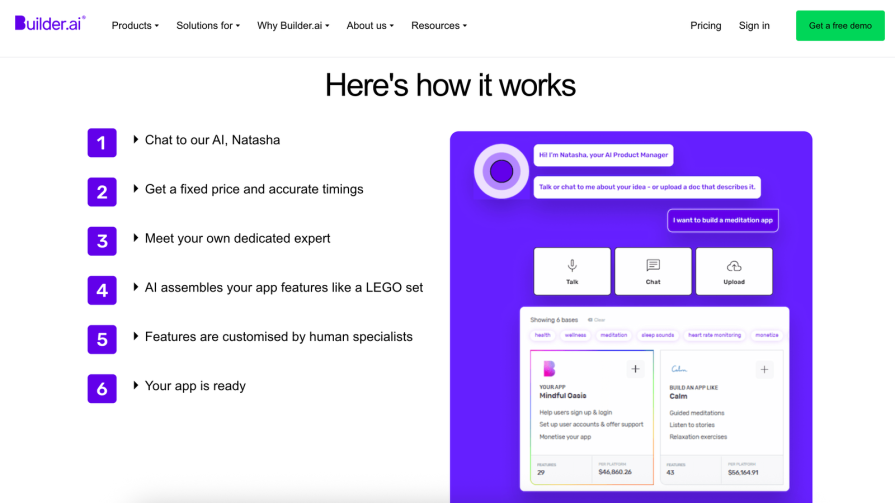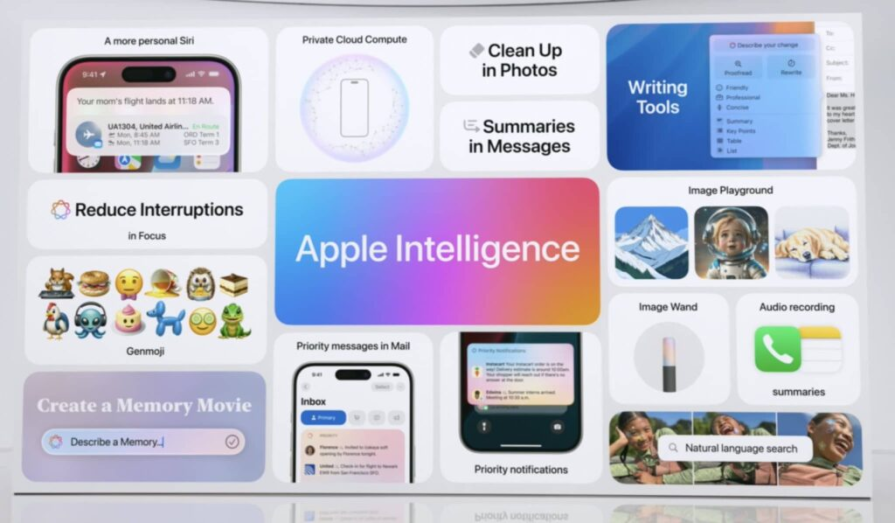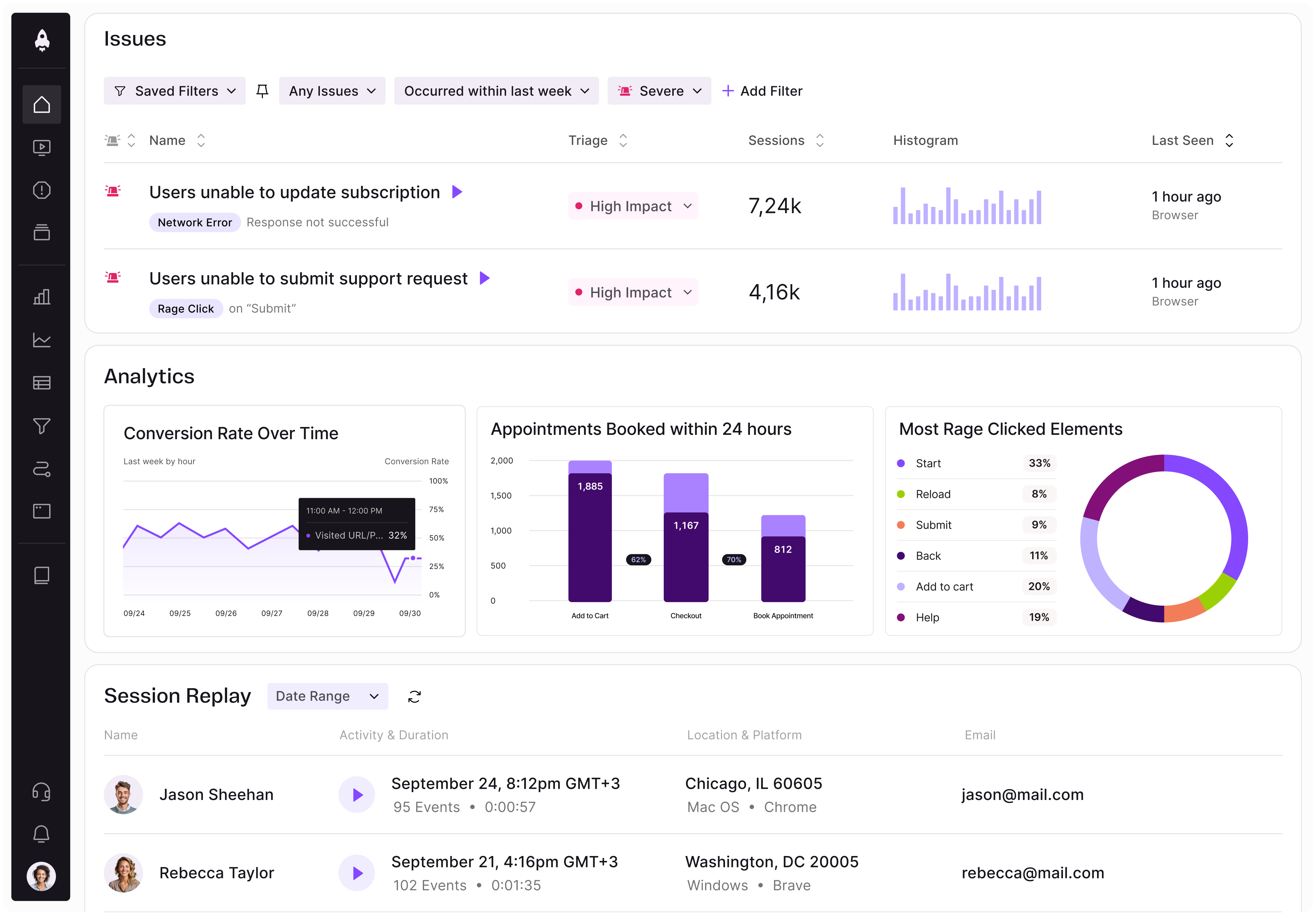Most people don’t become product managers for the technical parts of the role; people become PMs because they love creating new products and delivering valuable features to customers. However, it can be challenging to constantly come up with innovative solutions that your users want.

The arrival of large language models (LLMs) like ChatGPT felt like a fresh breath of air for the industry. Many companies, including some of the biggest names in the tech world, jumped head first onto the AI hype bandwagon, promising incredible new products and features. While this seems like a new frontier for product teams, it isn’t always as easy as it sounds in a meeting room.
And what happens when those bloated marketing promises have to actually become a reality? Builder.ai was the first one to really fall when the truth about what the “AI” really meant in its pitch came out. However, even Apple, known for innovation, great products, and marketing, stumbled here and hasn’t yet delivered on many of its AI promises.
So what’s the real cost of overpromising in the field of AI-powered features? Are users willing to forgive in time, or does this cause ongoing brand damage? Let’s unpack how to avoid falling into the same trap, and what to do if you’re already stuck in one.
To get started, let’s take a look at what’s been one of the most spectacular falls from grace.
Builder.ai built its narrative around democratizing software development through the power of AI. Its core promise was quite groundbreaking: non-technical users could describe a software product idea, and AI would make it happen within hours. But instead of sophisticated automation, reports revealed that the actual engine behind the product was a massive offshore workforce manually building each project.
There wasn’t any magic, and very little in the way of advanced AI. Under the glossy marketing, Builder.ai was running a global network of human engineers building software by hand, while packaging it as an “AI-powered” product. It was essentially a traditional services business dressed up as a tech innovator.
Builder.ai is a clear case of promises running far ahead of reality. The company painted a picture of instant AI-driven app creation, but its story was built on shaky ground. Deals with partners were structured to look like genuine sales, inflating income on paper while real cash flow lagged far behind.
When these numbers became public, investors and lenders quickly pulled back, freezing funds and demanding repayment. By mid-2025, enormous debt forced the company into insolvency, leadership was reshuffled, and employees were laid off.
The so-called AI revolution turned out to be a “fake it until you make it” scheme, and, since it couldn’t make it, the lie was exposed and ultimately collapsed the company:

Apple took the stage at WWDC 2025 with promises of a revolution: Apple Intelligence. This was a package of AI updates, including, but not limited to, a smarter Siri and GPT-powered enhancements.
But much of what was showcased turned out to be aspirational. Several features were delayed, others were limited to newer hardware, and the flagship Siri overhaul still hasn’t been released at the time of writing this piece. Funny enough, WWDC 2026 barely mentioned Apple Intelligence:

Apple’s case shows how even the most mature organizations can slip into overpromising, especially under market pressure to “do AI.” While Apple has the resources and trust to recover, it still serves as a warning. Even the best reputation doesn’t give you “a pass” when you stop to keep your promises.
Now that you’ve seen how companies have gone wrong, let’s turn our attention to how you can effectively navigate the challenges around the excitement of AI within your own product team.
Of course, everyone will try to say they knew the product was undeliverable after it’s already happened. But, the best way to prevent these promises is to make sure they’re not made in the first place.
These kinds of bloated promises don’t usually come from PMs, unless they’re trying to please stakeholders in an attempt to get promoted. Overpromises tend to creep in late due to miscommunication. This often appears from one of two causes:
In both cases, the solution is rather trivial. A good, open relationship between product and marketing should prevent any overblown claims from reaching users. It may happen once, but once the release process includes a marketing copy sign-off from the product people, it ensures sending precise messages to the users.
Being honest about delivery isn’t pessimism — it’s discipline. When leadership is excited about what’s possible, the temptation is to nod along and figure things out later. If you let the hype set expectations, you’ve already lost control of the story.
The art here is in how you respond. Simply saying “we can’t” rarely helps. A stronger move is to acknowledge the vision and redirect it toward what can actually be delivered. Consider the following steps:
A responsible PM makes sure the “no” doesn’t come from the engineers or designers in the room. Alignment is your responsibility, and that includes protecting the team’s credibility. At the very least, try to buy more time to look for a solution and ways to make management’s vision as close to reality as possible.
Sometimes the press release has dropped, the sales deck has gone live, or the CEO has said the words on stage. At that point, you’re not debating whether a promise should have been made — you’re dealing with the fallout.
The worst part? Although you haven’t made the promise, you might be fully scapegoated for allowing it to happen.
This is where product management shifts into damage control.
Clarify reality. Spell out in writing exactly what users will get and when: roadmaps, FAQs, internal briefings. Consistency matters more than enthusiasm.
Perhaps you can deliver on the promise, and there’s no need to panic. Maybe you just need more time. Maybe no one cares about the promise? Do your best and don’t stress over what you do not control.
Just go back to product basics. Break the vision into steps. If a sweeping AI feature was promised, stage it. Ship a first version that solves a slice of the problem, and build confidence as improvements roll out. Promises made on stage usually lack details, and you should exploit that opportunity to its fullest.
Own the recovery story. Users forgive faster if they see progress and honesty. Pretending everything is fine only deepens the disappointment.
At this point, you’re more than aware that one-off fixes will not prevent the cycle from repeating. To escape the trap of overpromising, teams must build habits that make honest delivery the default.
Culture is the safeguard. A few practical steps you may want to try, even when historically it’s the management that keeps dropping bombs on you:
In short, treat predictability as a product feature in itself. Trust is the compound interest of product management. It builds slowly through disciplined delivery and vanishes instantly when broken.
AI hype has exposed how fragile credibility can be, even for industry giants. Builder.ai collapsed under the weight of its own exaggerations. Apple has already disappointed even its most loyal fans. Both serve as reminders that users can’t be misled indefinitely, even with the best marketing and story in the world.
For product managers, the lesson is clear: promises aren’t free. They’re debt, and like any debt, they accrue interest. Your job isn’t only to build features, but also to steward expectations: internally, externally, and most importantly, honestly. If you keep delivery grounded in reality, you’ll not only avoid painful collapses but also stand out in a field where others burn trust too casually.
Featured image source: IconScout

LogRocket identifies friction points in the user experience so you can make informed decisions about product and design changes that must happen to hit your goals.
With LogRocket, you can understand the scope of the issues affecting your product and prioritize the changes that need to be made. LogRocket simplifies workflows by allowing Engineering, Product, UX, and Design teams to work from the same data as you, eliminating any confusion about what needs to be done.
Get your teams on the same page — try LogRocket today.

A practical guide for PMs who want to stop being bottlenecks, delegate smarter, and lead teams effectively with a clear ownership framework.

Stop letting unreliable data block features. Treat data as inventory to track quality, ownership, and ship with confidence.

Learn why slide decks slow teams down and explore better tools like whiteboards, PRDs, and prototypes to improve collaboration and alignment.

AI PM roles are evolving fast. Learn the five types of AI PMs, the skills they need, and how they shape AI products across industries.